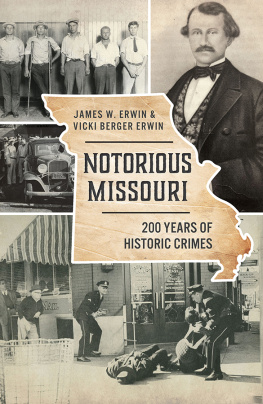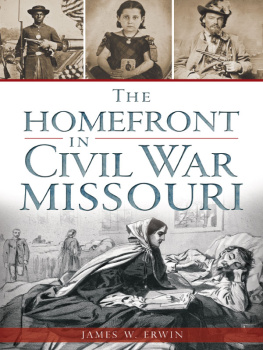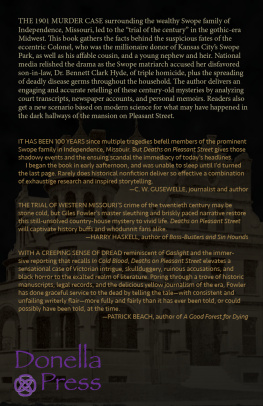


Published by The History Press
Charleston, SC
www.historypress.com
Copyright 2021 by James W. Erwin and Vicki Berger Erwin
All rights reserved
First published 2021
e-book edition 2021
ISBN 978.1.43967.232.7
Library of Congress Control Number: 2020951646
print edition ISBN 978.1.46714.669.2
Notice: The information in this book is true and complete to the best of our knowledge. It is offered without guarantee on the part of the authors or The History Press. The authors and The History Press disclaim all liability in connection with the use of this book.
All rights reserved. No part of this book may be reproduced or transmitted in any form whatsoever without prior written permission from the publisher except in the case of brief quotations embodied in critical articles and reviews.
CONTENTS
INTRODUCTION AND ACKNOWLEDGEMENTS
On February 8, 2007, Jim took the dog for her regular evening walk. Sirens blaredfirst one, then another and another and another. He stopped to talk to a neighbor. She said she heard that there was some kind of trouble at the City Halla shooting. A shooting in the quiet St. Louis suburb of Kirkwood?
Jim hurried home. He and Vicki locked the door and turned on the television. Thats when the horrible news began to dribble out. There had been a shooting at Kirkwood City Hall. Six people were killed, including city council members, a city official, police officers and the shooter. The mayor died a few months later from his injuries. They knew some of the victims. They know people who were there under fire and who survived, scarred by what they saw and endured. They talked about whether they shouldwhether they couldwrite about this notorious crime. They decided it must be done, but it was the most difficult part of this book to research and write.
The Kirkwood City Hall shooting was not the inspiration or motivation for writing this book, but it did remind Jim and Vicki that each of the crimes they wrote about here was its own tragedy. They were tragedies not only for the victims, but for the families and friends of the victims and perpetrators. Their experience with a tragedy that occurred in their own town, just a few blocks from where they live, reminded them that the people they wrote about were not just names on the page. They found their stories interesting, sometimes quirky, sometimes even funny in a bizarre sort of way, but they are, at their roots, tragic.
One of the crimes, the Mortimer murder in Mexico, Missouri, took place in Vickis hometown but long before her time. She knew nothing about this unsolved murder until after moving away. She chose to write about that crime and the unsolved McDaniel murder in St. Joseph because they were so similarly described in the press. Both were considered notorious and heinous likely because they were perpetrated against society women. The Mortimer crime is an excellent example of the mores of the thirties: a black man was seen in the area where the murder occurred, so black men were considered the primary suspects. In fact, there is nothing to say that anyone else was ever looked at. The Missouri State Highway Patrol was in charge of the investigation, but it has no information on the crime available today. Its perplexing. The suggestion that the suspect was a transient sounds good until one is reminded that there were two similar crimes that took place before the murder with no suspects. The suspects in the McDaniel murder were first thought to have been men the victims husband had dealt with, and the likely motive was revengeuntil the prosecutor himself became the suspect. He was not convicted, and that murder, too, remains unsolved. The third unsolved murderthat of William Owensis fairly characteristic of crime on the frontier. Suspects were arrested and set free on bond, only to disappear and never be heard from again. All armchair detectives investigate these unsolved cases in the hopes that a solution will magically appear.
Crime is an interesting topic, and there are always certain questions lurking below the surface. Why did this happen? Why did the perpetrator act? And probably most overarching: Could this happen to me?
The authors had to conduct the research for their last book on steamboats during a summer of floods. They researched and wrote this book during a pandemic. Thankfully, many institutions and publications have material online, making possible something that couldnt have been done a few years ago. Most of the authors sources came from newspaper stories that were printed as the tales unfolded. There were too many to list them all individually in the bibliography, but if readers are interested, they are posted on the authors websites.
The authors wish to thank the following persons for their assistance in finding information, illustrations and photographs: Dave and Lucy Tobben for suggesting the William Owens case; Marc Housman and the Washington, Missouri Historical Society for providing Owenss portrait; Lori Pratt and Janis Robison from the Audrain County Historical Society for providing the Margaret Mortimer materials; Charles Brown and Nick Fry for providing photographs from the St. Louis Globe-Democrat Collection at the Mercantile Library at the University of MissouriSt. Louis; Arlene Witterbee Muehlemann and Michael Huntington for the Morse Mill photographs, even though we werent able to use them; Reuben Hemmer for the D&G Tavern photograph; the Missouri Historical Society; the State Historical Society of Missouri; and the Missouri State Archives. Finally, the authors would like to thank Chad Rhoad, Ashley Hill and everyone at The History Press for their patience and support. Of course, any errors are ours alone.
DUELS AND GUNFIGHTS
Gunfights have been a part of Missouri history since the states territorial days. Arguments over politics or gambling or almost any dispute, no matter how petty, often resulted in one personor twodeciding to end it with a gun. In Missouris territorial days and during its early days of statehood, gunfights between the elites were dignified as duels or even interviews. Gunfights between the lower classes were just gunfights. Duelists tried to find secluded spots to vindicate their honor, but after the Civil War, the gunfights we now see popularized in modern media moved to the town squareand the first of those took place in Missouri.
A PERSONAL INTERVIEW: THE BENTON-LUCAS DUELS
Duels were ostensibly banned by territorial and state laws, but the political and legal elite of Missouri in the nineteenth century did not let such things as mere laws keep them from the so-called field of honor. Many of the settlers of the new Missouri Territory came from the Upper SouthVirginia, Tennessee and Kentuckywhere the code duello was still a vital force. The best-known duels of the time involved Missourians from those states.
Thomas Hart Benton was born in North Carolina. He later moved to Nashville, Tennessee, where he became a successful planter and lawyer and a protg of Andrew Jackson. However, trouble brewed between them when Jackson agreed to serve as the second in a duel between Bentons brother, Jesse, and William Carroll. Jesse was a notoriously bad shot, and his round only nicked Carroll in the thumb. Jesse crouched to receive Carrolls shot and was shot, as one of Bentons early biographers put it, in a prominent part of the body which is not supposed to be shot in duels.
Next page











